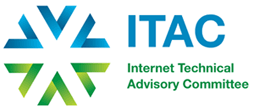By Marco Hogewoning & Chris Buckridge, RIPE NCC
Debate about the need for speedy adoption of IPv6 has been going on since its inception as the next generation Internet Protocol (IPNG) in the mid nineties. Even in the early design phases, the question arose of how to enable a smooth transition, and key features of the protocol were designed to create a non-disruptive migration path from the existing protocol (IPv4) to the new technology that we all now know as IPv6.
With the Internet now a major element of economic and social life, the question of how to encourage the Internet industry and users to adopt IPv6 remains, and has become an important issue even in non-technical forums such as the OECD. The reasons why may have changed, but even with today’s ubiquitous Internet use, IPv6 adoption is still not being deployed quickly and the Internet remains largely dependent on IPv4.
In the late nineties, the technology simply wasn’t ready for production use, and the Internet industry crash at the start of the millennium severely slowed the necessary innovations and development. But an increasing number of recent large-scale IPv6 deployments have shown that the technology is ready for use and today’s infrastructure can support IPv6. The next challenge is to teach people how to use it. This is a problem that several ITAC members, including the Regional Internet Registries, have sought to address through a variety of capacity building programs targeting various Internet stakeholder groups.
However, the biggest obstacle to a widespread deployment of IPv6 to date is the lack of a clear business case to recover the cost of such a deployment. A lot of effort has gone into identifying an economically viable business case, but even as the cost of sustaining and growing IPv4 networks has grown (due to factors such as the need to buy additional IPv4 resources in the open market), it appears IPv6 is still seen as a net cost for operators.
The fundamental problem here is that the majority of market players still view IPv6 as a product, rather than what it really is: a building block to a new future.
The ever-increasing demand for connectivity in developing markets means millions of new users are connecting to the Internet each month. But it is not only people connecting; more and more devices and sensors are being connected as part of what is sometimes called the Internet of Things (IoT). Nobody really knows how this will develop, but the one certainty we have is that IPv4, with its limited number of addresses, will never be able to support this new way of using the Internet.
In this sense, the question of IPv6 adoption is a foundational one for much of the work and study being done in the OECD’s Committee on Digital Economy Policy (CDEP) and its working parties. The Internet of Things, machine-to-machine networks, network neutrality, mobile networks – all of these issues are affected by the success of IPv6 deployment.
As our vision of the Internet evolves from that of a medium for connecting people to an all-encompassing network underlying our economy and society, we also need to let go of this idea of IPv6 as a product. Rather than seeking direct recovery of deployment costs, we need to focus on the value of IPv6 deployment as a critical element for the Internet’s continuing growth and utility. Widespread adoption of IPv6 will enable the Internet to grow and allow new innovations to develop – it is these new users and uses that make the cost of deploying IPv6 worth it.
_______________________
The RIPE NCC was one of the key founding members of the Internet Technical Advisory Committee when it launched in 2008. With Internet governance already gaining prominence in many inter-governmental settings, it was clear that the OECD could be an important venue for producing authoritative analyses of the economic and political impact of developments in the Internet industry.

